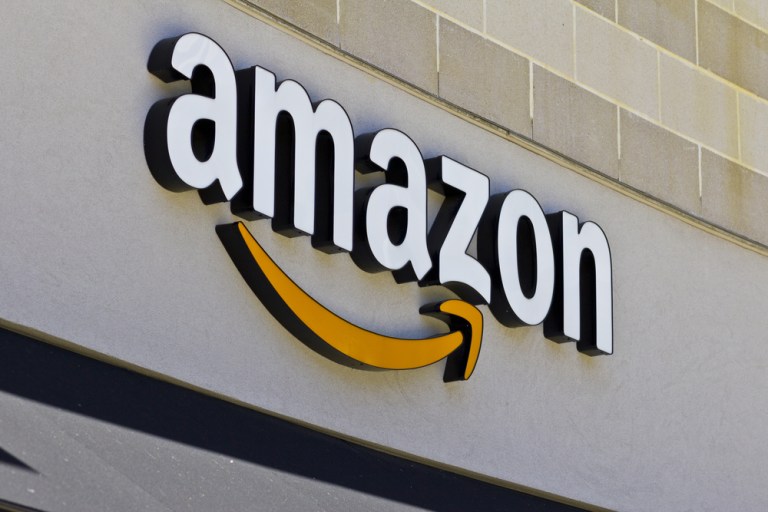
There was a lot of positive news in Amazon‘s earnings report — delivery is growing, Prime membership is holding firm despite price increases, its multi-channel offerings are expanding, advertising revenue is exploding. Amazon even managed to push out a better-than-expected earnings performance.
But analysts and investors only had eyes for revenue — Q3’s, which fell short, and Q4’s, which was forecasting well below expected levels during the holiday season.
Amazon largely waved off the declines as mostly due to bookkeeping changes, forex and calendar fluctuation — but analysts were clearly spooked by the thought of a slow Amazon holiday season and dropped the stock as the market closed.
Undaunted, Amazon CFO Brian Olsavsky noted in his call with analysts after the release that Amazon remains confident Q4 will be a strong sales period for the nation’s largest eCommerce retailer.
“We feel like we are in great shape for the holiday — we are seeing great capacity for retail products and great capacity for shipping to our customers; we are raring to go, selection should be at it highest point,” Olsavsky noted. “We are very bullish on the fourth quarter.”
Analysts looking at the numbers, however, were feeling less bullish.
The Retail Sales Picture
On the sales side, Amazon reported $56.6 billion in total revenue — a 29 percent increase year-on-year, but short of the $57.10 billion forecast.
North American sales came in at $34.3 billion — a 35 percent increase from last year. But international sales were sluggish, only up 13 percent year on year. Amazon also continues to lose money on international sales — but it is losing less money over time. Global losses were $385 million, compared to $936 million at this time last year.
Amazon also extended its profitability streak — net income grew 11 times from the year-ago period, to a record-high $2.88 billion. That’s Amazon’s fourth straight quarter of profit over $1 billion and brings its profitability streak past the three-year mark.
Olsavsky also talked up the growing strength of the Amazon marketplace and the lasting strength of Prime. As of Q3, 53 percent of sales come via the marketplace. When asked if Prime’s recent price increase had had any effect on Prime membership figures, Olsavsky did not offer specific figures, but did note that the price change had had very little effect on enrollment.
He also pointed out Amazon’s expanding multichannel presence in 2018, calling out Amazon’s 60 cities of Whole Foods grocery delivery for Prime members, nationwide grocery pick-up, 18 bookstores, 6 Amazon Go locations and its single 4-Star Store in New York.
“Going forward we are going to continue to experiment with multiple ways of reaching the customers wherever they happen to be,” he noted.
Speaking of reaching customers, the 123 percent sales growth was in Amazon’s “other” category, the home of its advertising businesses. Analysts asked lot of questions about it: what the demand for it is, if they had adequate digital real estate to support more advertisements, how much they would like to expand their advertising business and whether or not they were considering allowing third party advertisers a crack at Alexa and embedded ads.
Amazon officially offered no specific answers to any of those questions other than to confirm they have at this time no plans to allow advertising to expand on their voice platform. Other than that, Olsavsky confirmed that Amazon will continue to look for ways to expand its opportunities and products for advertisers, but didn’t have much to say about how, or how much capacity for advertising they currently have.
The Holiday Numbers Blues
The number that has gotten the most attention, however — and caused the most concern — is Amazon’s Q4 revenue guidance, which the company placed in the range of $66.5 billion and $72.5 billion, rising between 10 percent and 20 percent year on year and well below consensus estimates of $73.79 billion. Fourth-quarter operating income guidance of $2.1 billion to $3.6 billion was also below Street expectations of $3.9 billion.
Analysts questioned if Amazon’s recent across-the-board wages increase to $15 an hour for all employees was to blame — or the recently announced increased shipping rates.
Olsavsky noted that shipping rate increases are a common part of Amazon’s business and noted that they did not believe they would be a significant factor. He also noted that the wage increase announced earlier this month was incorporated into the guidance, but declined to quantify its impact.
“We’re expecting a strong holiday season, so there’s no message in our forward guidance against that,” he said on a conference call with media. “We have everything ready to roll.”
Investors, however, were clearly less-than-enamored of a less green Christmas out of Amazon than they were forecasting — they dropped the stock nine percent as results hit the wires, making yesterday’s close its lowest since May.